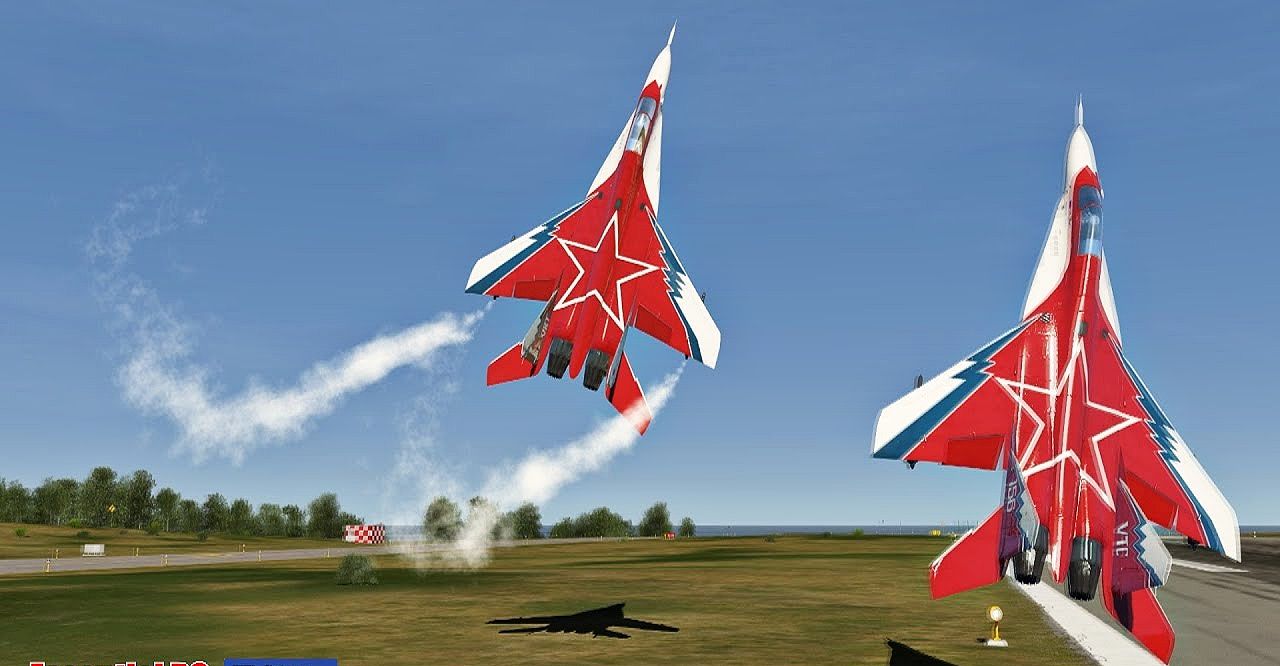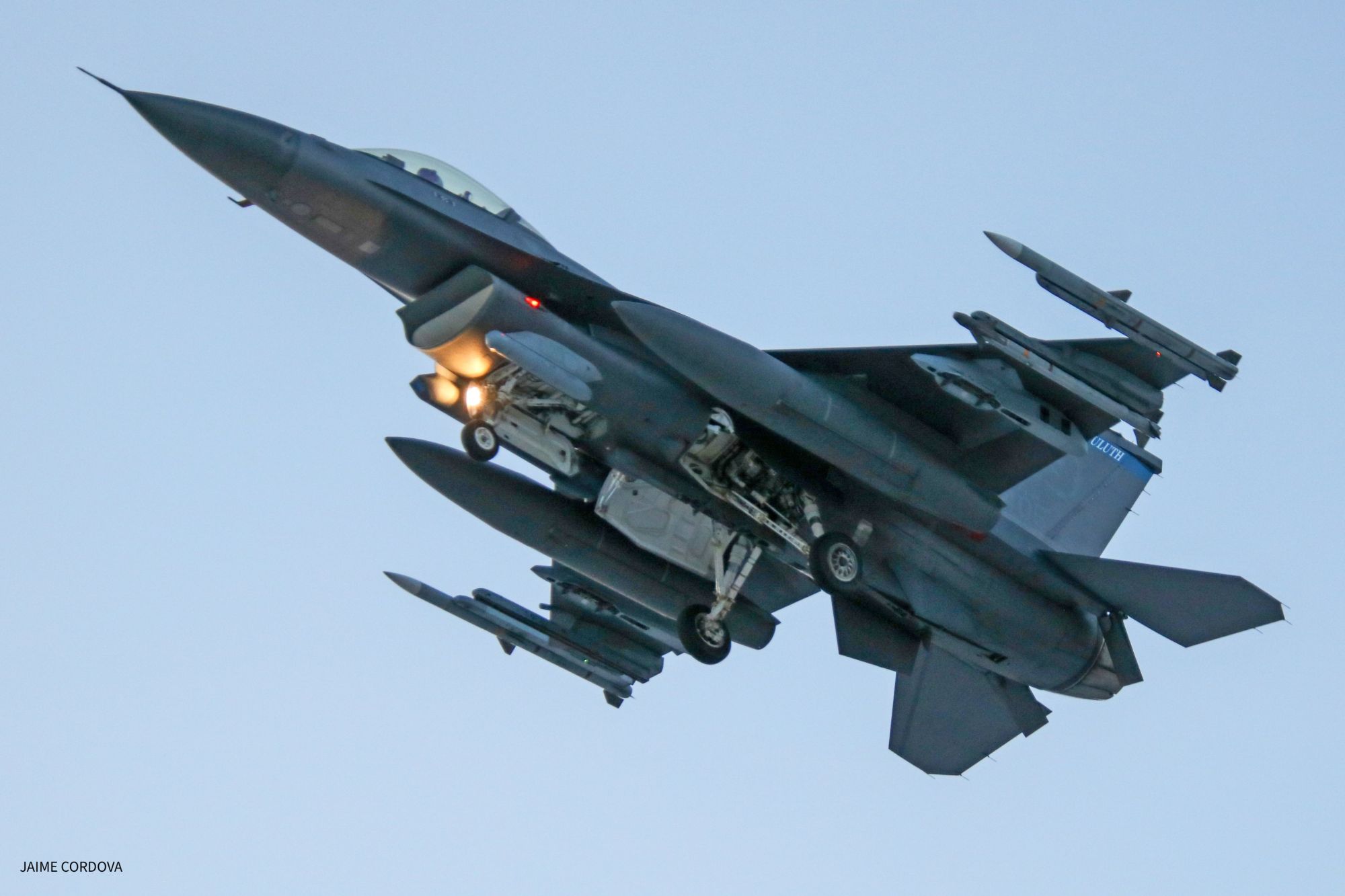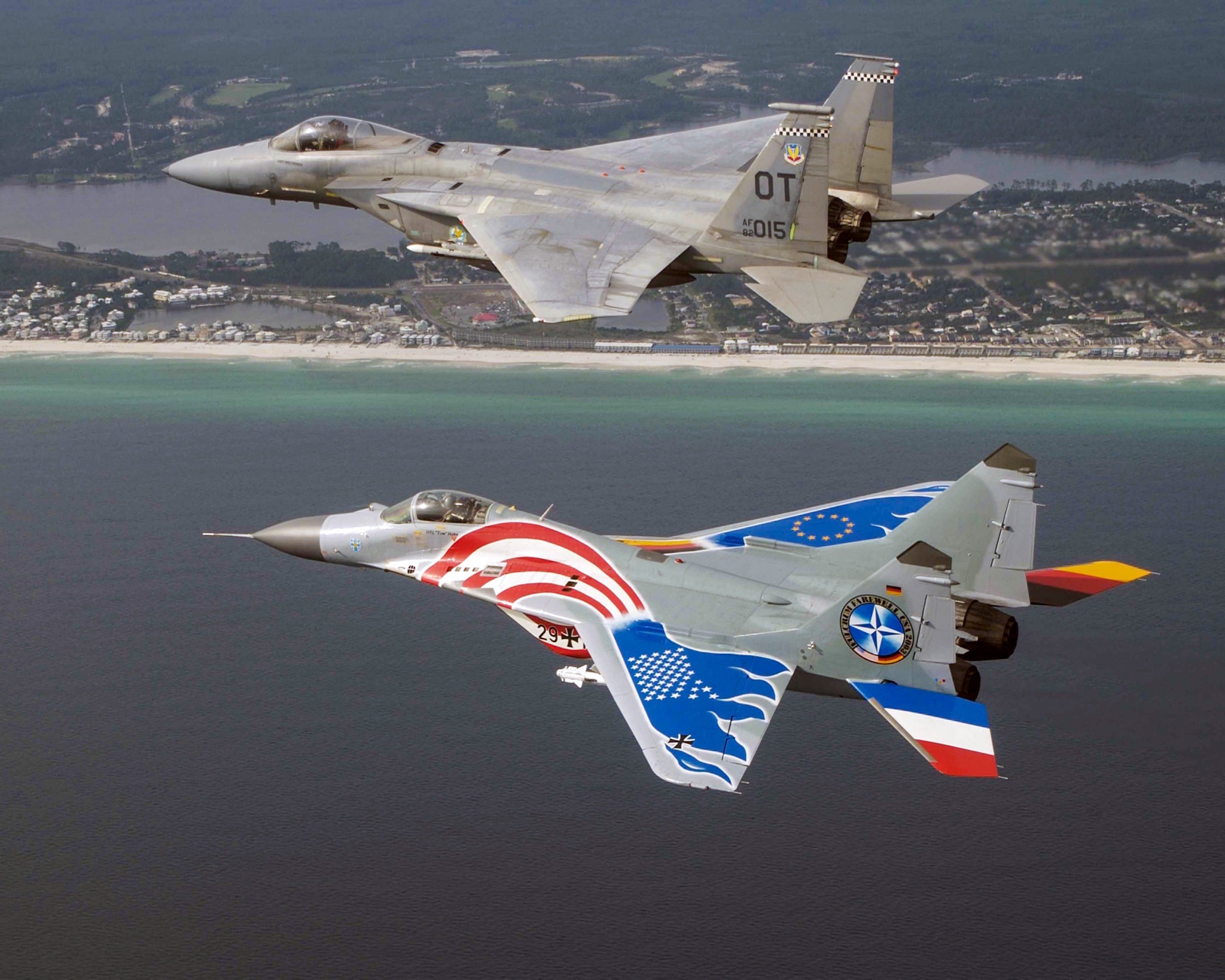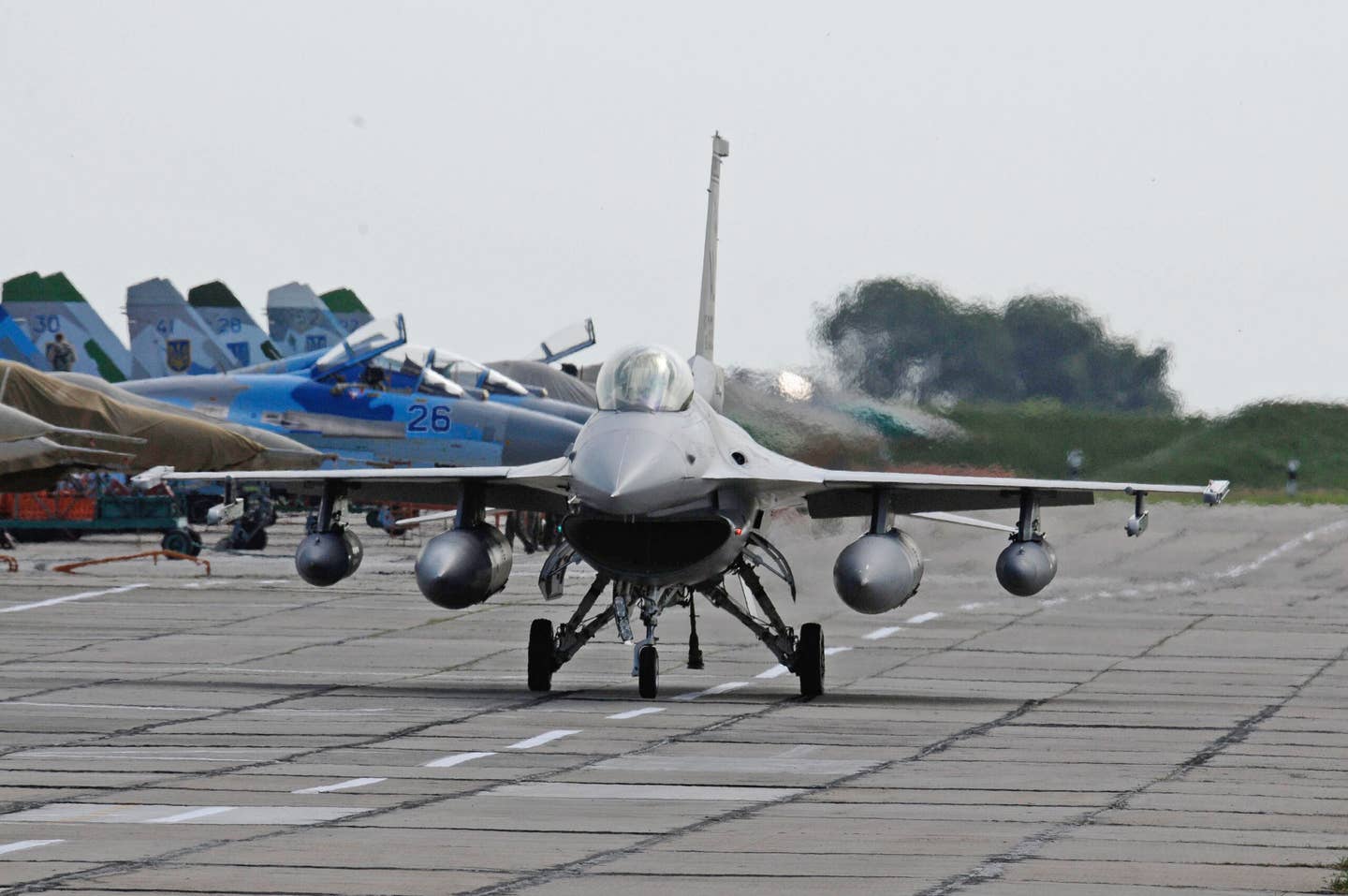The first four Slovakian MiG-29s arrived in Ukraine, marking the first NATO delivery of fighter jets to the war-torn country. However, experts contend these aircraft will still fail to meet Kyiv’s vociferous demands for advanced Western jets like the F-16s.
Earlier this month, Ukraine’s neighboring countries, Poland and Slovakia, pledged the first tranche of MiG-29 fighter jets to Ukraine. Poland will send four Soviet-made aircraft, while Slovakia will send 13.
However, military veterans argue that the additional MiG-29s would not be a game-changer for Ukraine.
“This is far more symbolic as a gesture than it is actually improving the ability of the Ukrainians to wage war in the air with the Russians,” former British Air Commodore Andrew Curtis was cited as saying by Newsweek.
Notably, the MiG-29 was designed by the Soviet Union to counter the threat from a new generation of American-made fighter jets, which included the F-15 and F-16.
The American F-16As entered operational service in 1979, and only four years later, the Soviet Frontal Aviation units also started receiving their deliveries of MiG-29 Fulcrums.
The MiG-29 posed a fierce threat to Western pilots, and the first F-16 Viper pilots to engage the MiG-29 in mock air combat had showered praises on the Fulcrum.

F-16 Pilots Impressed By MiG-29
The countries that received the MiG-29 fighter jets also included East Germany, and these MiG-29s remained operational even after the German reunification.
The Luftwaffe (German Air Force) used them for national Quick Reaction Alert (QRA) service and as an adversary aircraft during NATO air exercises, where the MiG-29 demonstrated its formidable air-to-air capabilities.
The first Western fighter pilots that had the opportunity to engage with the Fulcrum in mock air combat were from the US Air Force’s (USAF’s) 510th Fighter Squadron (FS) “Buzzards” belonging to the 31st Fighter Wing (FW) from Aviano Air Base in northern Italy.
They flew against Luftwaffe Jagdgeschwader 73 (JG 73) MiG-29s in May 1995 during a German Fulcrum deployment to Decimomannu Air Base, on the southern tip of Sardinia, according to an extensive article written by David Sarvai.
Capt. Mike McCoy, one of the 510th FS F-16 pilots, who faced off with the JG 73 MiG-29s, noted that one of the most impressive features of MiG-29 for the American pilots was its low-speed maneuverability combined with its helmet-mounted sight system.
“In a low-speed fight, fighting the Fulcrum is similar to fighting an F-18 Hornet, but the Fulcrum has a thrust advantage over the Hornet. An F-18 can crank its nose around if you get into a slow-speed fight, but it has to lose altitude to regain the energy, which allows us to get on top of them. The MiG has about the same nose authority at slow speeds, but it can regain energy much faster,” said McCoy.

The F/A-18 Hornet is powered by two F404-GE-402 afterburning engines, producing 18,000-pound thrust each, whereas two Izotov R-33D turbofan engines power the Fulcrum with 18,300 pounds of thrust each.
McCoy said, “the MiG pilots have that forty-five-degree cone in front of them into which they can fire an Archer and eat you up.”
AA-11 Archer is a NATO designation for the Soviet R-73 short-range air-to-air missile, which relies on infrared homing for guidance and can be fired using the helmet-mounted sight.
So, in a slow-speed fight, a Fulcrum pilot, with the helmet mounted sight, can look up forty-five degrees to fire an Archer missile without needing the aircraft’s nose to point at the target.
“When I got close, I had to consider that helmet-mounted sight. Every time I got near a Fulcrum’s nose, I was releasing flares to defeat an Archer coming off his rail,” McCoy noted.
As EurAsian Times discussed earlier, these mock fights usually entail the two opposing aircraft making a very close, neutral pass to each other, generally heading in opposite directions, after which they move in circles to try and point their nose against each other.
So, below 200 knots, MiG-29 has exceptional nose-pointing capability down to below 100 knots. However, in combat engagements exceeding the 200-knot speed regime, the F-16 can accelerate faster to impose a vertical loop on the Fulcrum.
However, with the helmet-mounted system, the Fulcrum could still fire an across-the-circle shot toward an opposing aircraft.
“By being patient and keeping airspeed up around 325 knots, an F-16 can bring the MiG-29 to its nose. But the pilot must still be careful of the across-the-circle shot with that helmet-mounted display,” said Lt. Col. Gary West, the commander of the 510th FS at the time.

MiG-29’s Limitation And Why Ukraine Prefers F-16s
The Fulcrum also has several limitations, as explained by McCoy, one of the USAF pilots who had the opportunity to fly in German MiG-29s.
“Their visibility is not that good,” McCoy said. “Their disadvantage is a real advantage for us. F-16 pilots sit high in the cockpit. All the MiG-29 pilots in our cockpit wanted to look around with the canopy closed. They were impressed that they could turn around, look at the tail, and even see the engine.”
This was also corroborated by Capt Michael Raubbach, one of the Fulcrum pilots of the JG 73 at the time.
“Our visibility is not as good as an F-16 or even an F-15. We can’t see directly behind us. We have to look out the side slightly to see behind us, which doesn’t allow us to maintain visual contact and an optimum lift vector simultaneously. This shortcoming can be a real problem, especially when flying against an aircraft as small as the F-16,” said Raubbach.

McCoy said, “besides visibility, I expected better turning performance; the MiG-29 is not a continuous nine-g machine like the F-16.”
However, Capt. Oliver Prunk, then JG 73 operations officer, explained that the MiG-29 lacked the continuous nine-g capability because it was not necessarily built with the purpose of dog fighting.
“The aircraft was not built for close-in dog fighting, though it is aerodynamically capable. The East Germans flew it as a point defense interceptor, like a MiG-21,” said Prunk, noting that sorties usually lasted about thirty minutes, and “the airplane was designed to scramble, jettison the tank, go supersonic, shoot its missiles, and go home.”
That said, it is essential to note that the debate surrounding the provision of MiG-29 and Western fighter jets to Ukraine, the F-16, in particular, is not centered around the respective maneuverability of these platforms or their dogfighting prowess.
As EurAsian Times discussed earlier, the F-16s on their own will not make a massive difference when pitted against Russian 4.5-gen Su-35 fighters.
Also, both F-16 and Su-30/35 have helmet-mounted displays to deploy their respective infrared-guided weaponry. Both fighters also have Missile Approach Warning Systems (MAWS) to detect incoming infrared-guided missiles, which could be dealt with flares.

Considering the respective detection ranges of the fire control radar of these aircraft and their armament, the engagement is most likely to be Beyond the Visual Range (BVR), in which the Su-35 enjoys a decisive advantage in terms of range and weaponry.
An essential feature of the F-16, which the Ukrainians are believed to be interested in, is NATO’s Link 16 tactical data link network which could come with the aircraft. The data link enables all the assets on the battlefield to share the same picture.
In that case, NATO could employ its AWACS airborne radar near Ukrainian air space to provide tracking information to F-16s and guide the AMRAAMs fired by them mid-flight toward their targets.
However, experts have warned that NATO AWACS platforms supporting the Ukrainian F-16s could make them active participants in the conflict in the eyes of the Russian leadership.
Deputy Chairman of Russia’s Security Council and Former President Dmitry Medvedev warned last year that NATO personnel actively participating in the conflict will become a “legitimate target” for the Russian armed forces.
- Contact the author at tanmaykadam700@gmail.com
- Follow EurAsian Times on Google News




